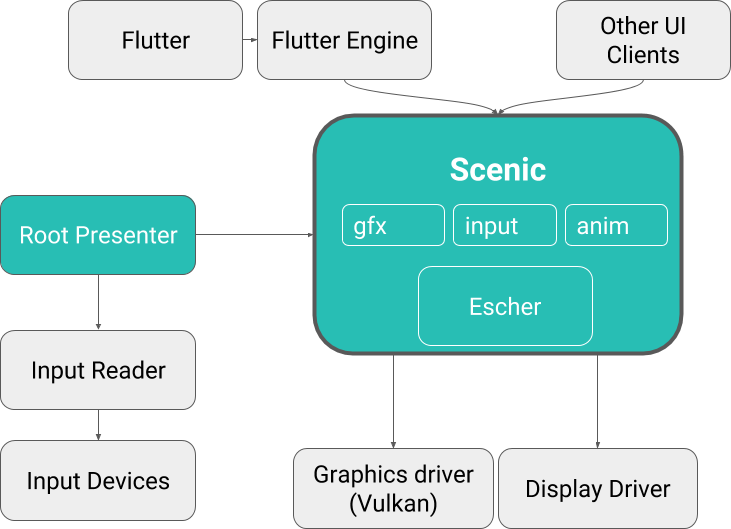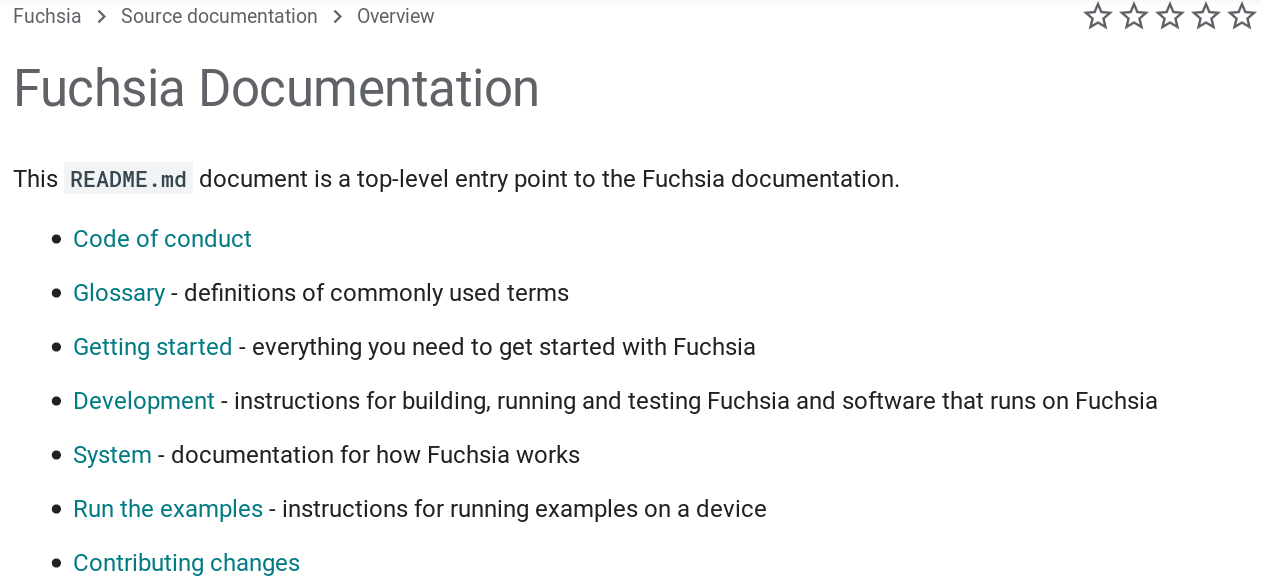Google has been developing Fuchsia open source operating system based on Zircon kernel for several years. It’s still unclear what’s the end goal. Will it replace Android or/and Chrome OS, ditching the Linux kernel for Zircon in the process?
We don’t know, and Google claims its an experimental endeavor. Only the future will tell. We’ve had access to the source code since 2016, but Google has now launched a dedicated developer website for Fuchsia: fuchsia.dev
This is year 2019, and Google being a Western company it should not be surprising the first part of the documentation is a Code of Conduct, but there’s also plenty of technical documentation with a glossary, getting started guide, building instructions, an overview of the OS, code samples, and instructions to contribute either by testing or submitting changes to Gerrit.
Fuchsia is strictly a 64-bit operating system at this stage with support for Arm64 and x86-64 ISA only. If you want to test drive Fuchsia on actual hardware, you’ve got a choice of 5 supported targets:
- Acer Switch Alpha 12 2-in-1 laptop powered by Intel Core-i3/i5/i7 processor
- HiKey 960 SBC based on HiSilicon Kirin960 octa-core Arm Cortex-A73/A53 processor
- Official NXP iMX8M EVK (quad-core Cortex-A53)
- Khadas VIM2 board based on Amlogic S912 octa-core Arm Cortex-A53 processor
- Various Intel NUC’s
- Jetway “Toulouse” 4-/6-port network appliance powered by an Intel Skylake Celeron processor
If you don’t own any of those platforms, you could always run Fuchsia in QEMU.

Some of the key block in Fuchsia include:
- Zircon – The kernel
- Scenic – The graphics engine
- Magna – Vulkan graphics driver
- Escher – Visually based renderer
- Flutter – UI toolkit
There are also various frameworks, storage and networking stacks, etc… without specific codenames.
Via XDA Developers

Jean-Luc started CNX Software in 2010 as a part-time endeavor, before quitting his job as a software engineering manager, and starting to write daily news, and reviews full time later in 2011.
Support CNX Software! Donate via cryptocurrencies, become a Patron on Patreon, or purchase goods on Amazon or Aliexpress





